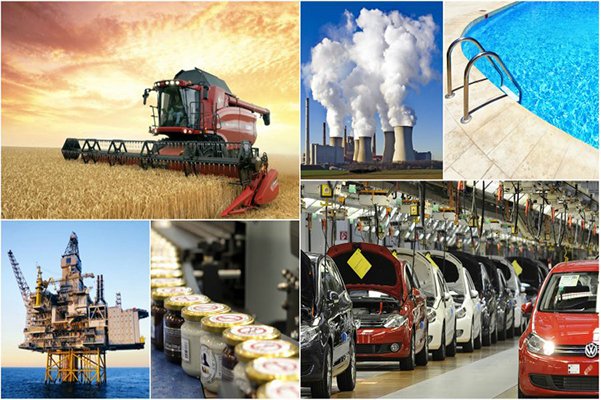What is SS 410 ?

Stainless Steel 410 may be hardened via a "cooling" heat treatment, similar to the majority of carbon steels. The essential martensitic stainless steel is Stainless Steel 410. It contains at least 11.5% chromium, which is just enough to provide it corrosion-resistant properties. After being polished, hardened, and tempered, the corrosion resistance of the material achieves its maximum potential. This grade is used for applications requiring a combination of high strength and moderate heat and corrosion resistance.
What is SS 316?

The relevance of the austenitic stainless steels is ordered from most significant to least significant, with 304 being the most significant. Stainless Steel 316 is the standard grade containing molybdenum. Because to the presence of molybdenum, 316 offers improved overall corrosion resistance compared to Grade 304, particularly greater resistance to pitting and crevice corrosion in chloride-rich environments. It has exceptional qualities for shaping and welding. It is easy to break or roll form into a large number of pieces for use in several architectural, transportation, and industrial purposes.
Chemical difference between SS 410 vs SS 316
The martensitic stainless steel grade known as Stainless Steel 410 has 11.5-13% chromium in its composition. Since it has a high chromium concentration and a low carbon content, it has excellent resistance to corrosion. This is due to the combination of the two factors. Nevertheless, 410 stainless steel may become prone to corrosion if it is subjected to high temperatures (particularly those that are higher than 1400 degrees Fahrenheit) or if it is exposed to specific pollutants. Compared to 410 stainless steel, the austenitic stainless steel grade 316, typically has higher chromium concentrations (16-18%) and lower molybdenum concentrations (1-2%). As a consequence of this, it has, in the great majority of applications, corrosion resistance that is superior to that of 410 stainless steel. In addition to this, it is much superior than 410 stainless steel in terms of its resistance to both high temperatures and chemical compounds. As it includes more chromium and molybdenum than 410 stainless steel, the price of 316 stainless steel is much higher. This is the cost associated with its better quality.
Properties of SS 410 vs SS 316
Stainless steel is one of the most often used materials for the creation of sturdy and long-lasting objects. In contrast, not all stainless steels possess the same qualities. Because of their strong performance qualities and extensive availability, grades 410 and 316 are often used in the manufacturing of a wide range of items, including buildings, infrastructure, tools, and medical equipment. While 410 is less expensive than 316, it lacks the same heat and corrosion resistance. Owing to the higher molybdenum content of 316 stainless steel alloy, it is better suited for use in demanding industrial and medical settings with higher safety standards. Due of this, 316 stainless steel is an ideal option for applications requiring a very high level of strength and durability, such as threading screws, hinges, springs, and other similar components.
Composition : The inclusion of molybdenum to the 316 alloy accounts for the compositional difference between 410 and 316 stainless steel. Molybdenum is an element with enhanced corrosion resistance and enhanced mechanical characteristics. Hence, 316 stainless steel costs more than 410 stainless steel.Corrosion Resistance : Since 316 stainless steel is composed of 410 stainless steel, as well as molybdenum, it has a stronger resistance to corrosion than 410 stainless steel. This is because molybdenum is an element that is naturally present in molybdenum. Molybdenum has a stronger resistance to the corrosion that is induced by chloride ions, which is a concern that might arise in certain circumstances, such as those that contain applications that are employed in marine or coastal environments.
Machinability :Since 410 stainless steel has a greater carbon content than 316 stainless steel, it is more difficult to machine than 316 stainless steel. This is because 410 stainless steel has more carbon than 316 stainless steel. Since carbon has a hardening effect, machining 304 stainless steel is a more challenging task than machining 316 stainless steel. As a direct result of this, type 410 stainless steel is usually never used unless the pace of machining is not the primary concern.
Weldability : 410 stainless steel is less suitable for welding than 316 stainless steel due to its higher carbon content. 316 stainless steel has less carbon. Carbon may be utilised as a filler material during welding, which may result in material concerns like porosity and cracking. In order to avoid these issues, welding must be performed with extreme precision. Furthermore, preheating may be necessary to properly weld large sections of type 410 stainless steel.
Price : The greater amount of nickel that is present in 316 stainless steel is the primary contributor to the price differential between 410 stainless steel and 316 stainless steel. As compared to the price of 410 stainless steel, the price of 316 stainless steel is higher because it contains nickel, which is an expensive metal.
Tensile Strength : The tensile strength of stainless steel 410 fluctuates from 520 to 770, while that of stainless steel 316 is constant from 520 to 770. In terms of yield strength, stainless steel 410 has a value between 290 and 580, while stainless steel 316 has a range between 230 and 850. 316 stainless steel is adaptable and may be used in a range of settings, while 419 stainless steel is appropriate for high-stress conditions and certain strength-related situations.
In comparison to the chemical makeup of Stainless Steel 410, the more common usage of Stainless Steel 316 may be attributed to its high level of corrosion resistance as well as its weldability. On the other hand, the cost is higher. The corrosion resistance and rust resistance capabilities of 316 stainless steel are superior to those of 410 stainless steel; nonetheless, 316 stainless steel cannot replace 410 stainless steel in a few unique circumstances.
 "GOVERNMENT RECOGNISED STAR EXPORT HOUSE"
"GOVERNMENT RECOGNISED STAR EXPORT HOUSE"



 India
India Japan
Japan Russia
Russia United States
United States Saudi Arabia
Saudi Arabia Kuwait
Kuwait Singapore
Singapore Malaysia
Malaysia UAE
UAE Germany
Germany Italy
Italy China
China UK
UK Canada
Canada Iran
Iran Thailand
Thailand South Korea
South Korea Turkey
Turkey Morocco
Morocco Costa Rica
Costa Rica Kazakhstan
Kazakhstan Philippines
Philippines Egypt
Egypt Vietnam
Vietnam Oman
Oman Australia
Australia Qatar
Qatar Portugal
Portugal Mexico
Mexico Brazil
Brazil France
France South Africa
South Africa Jordan
Jordan Spain
Spain Hong Kong
Hong Kong Netherlands
Netherlands Indonesia
Indonesia Taiwan
Taiwan Nigeria
Nigeria Bangladesh
Bangladesh Iraq
Iraq Ukraine
Ukraine Poland
Poland Romania
Romania Cyprus
Cyprus Angola
Angola Colombia
Colombia Norway
Norway Chile
Chile Tobago
Tobago Greece
Greece Czechia
Czechia Belgium
Belgium Sri Lanka
Sri Lanka Myanmar
Myanmar Venezuela
Venezuela